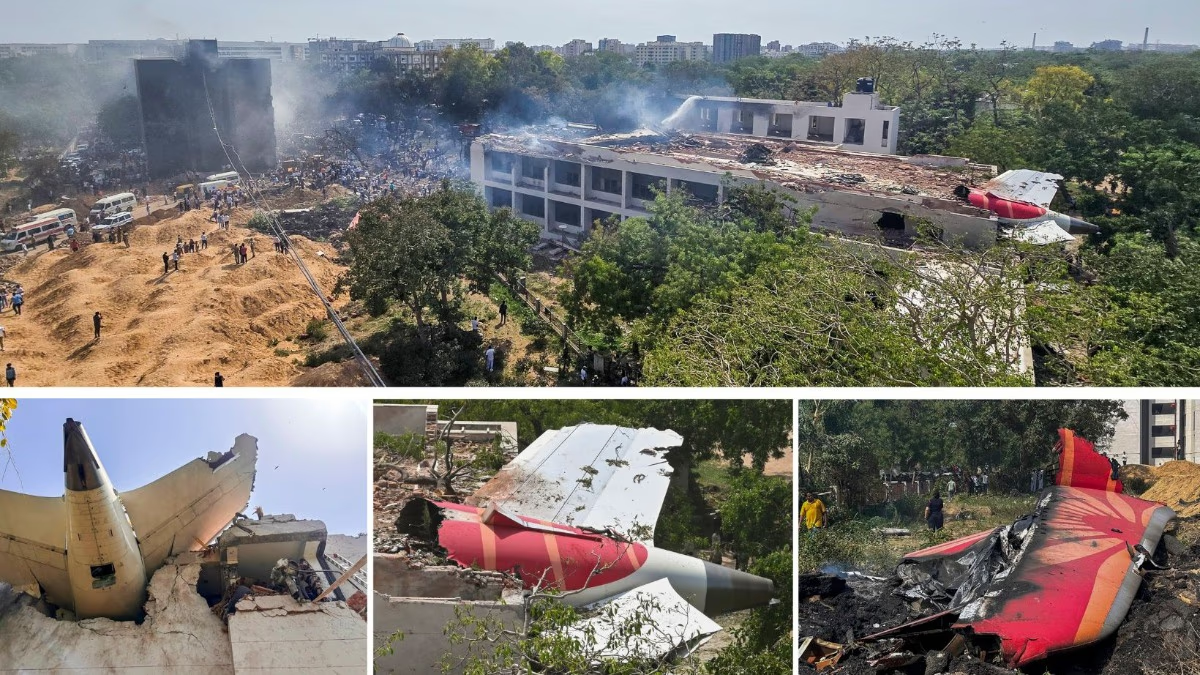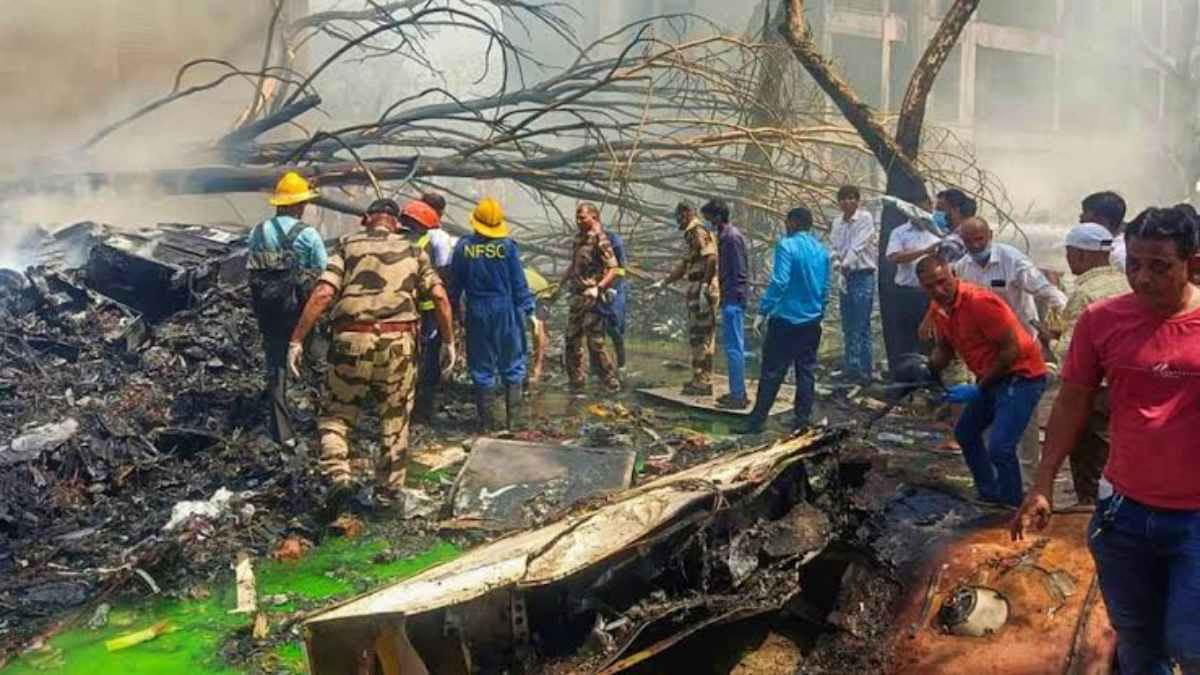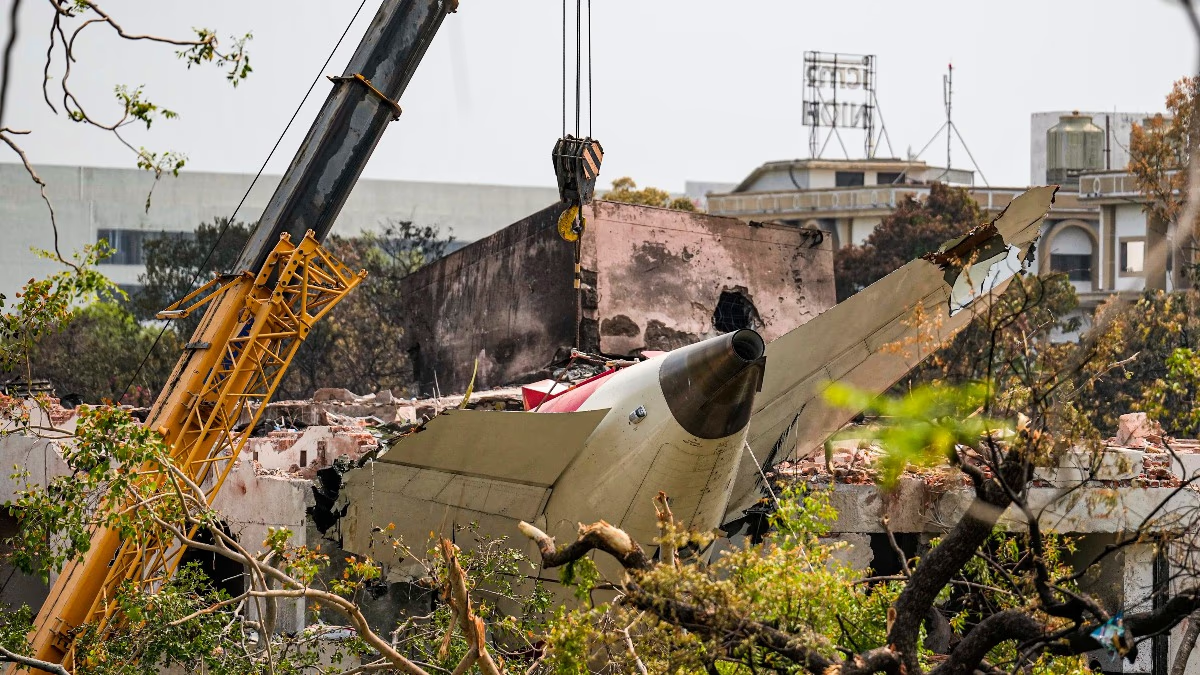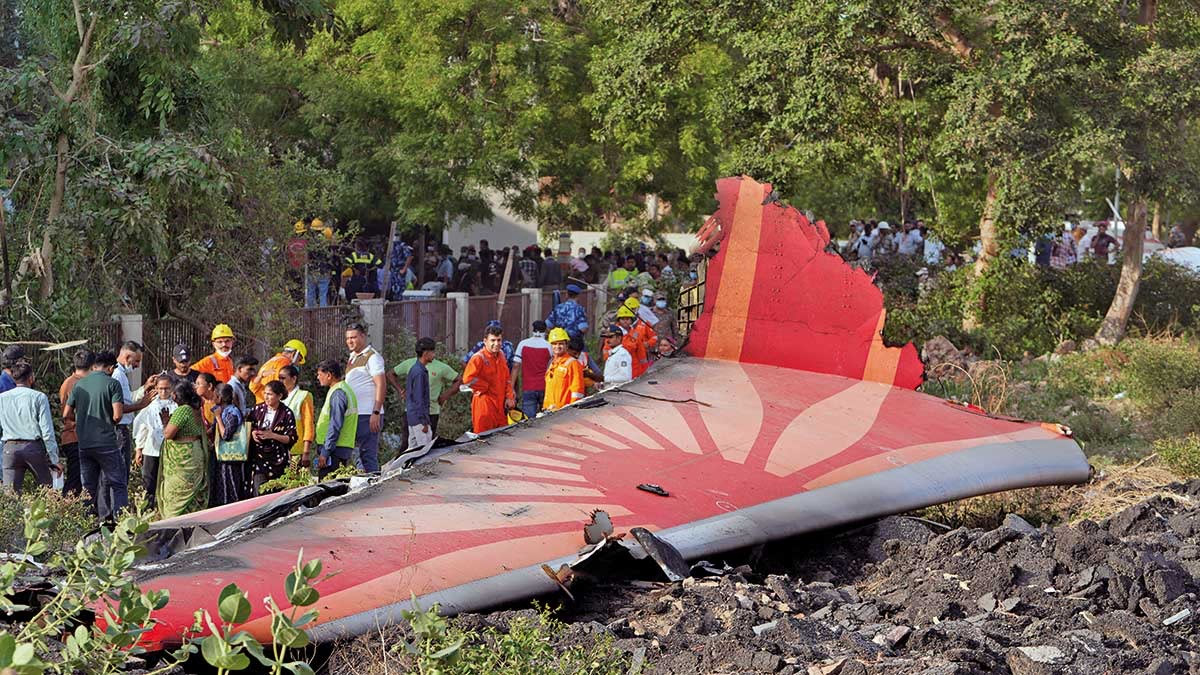The Aircraft Accident Investigation Bureau (AAIB) of India has released its preliminary report on the tragic Air India crash on June 12 in Ahmedabad. The report unveils startling details. It emerged that both engines of the aircraft suddenly shut down shortly after takeoff, leading to the inevitable crash.
According to the 15-page AAIB report, the aircraft achieved a maximum indicated airspeed (IAS) of around 180 knots at approximately 08:08 AM. Immediately after takeoff, the fuel cut-off switches for engines 1 and 2 were mysteriously set to 'CUTOFF' from 'RUN', within just one second of each other, resulting in the engines losing fuel supply. This caused a rapid decrease in N1 and N2 rotation speeds of both engines.

Source: aajtak
Pilot's Surprising Conversation
The report further revealed that the cockpit voice recorder captured a conversation between the pilot and co-pilot about the engine shutdown. Pilot Sumit Sabharwal queried his co-pilot Clive Kunder, 'Why did you cut the engine fuel?'. To which co-pilot Clive Kunder replied, 'I did nothing.' This conversation deepens the mysterious nature of the incident, as both pilots have denied shutting down the engines. This points toward a potential technical glitch. However, the report mentioned that so far, there is nothing found that requires issuing any warnings to Boeing 787-8 aircraft or its engine manufacturers.
Attempt to Relight Engines, But Fail
The report states an attempt was made to relight both engines. Engine-1 started to recover to some extent, but Engine-2 did not regain full speed. During this time, the Auxiliary Power Unit (APU) also activated in auto-start mode but could not stabilize the aircraft.

Source: aajtak
Investigations into the airport CCTV footage revealed the Ram Air Turbine (RAT) deployed immediately after takeoff. Typically, RAT deploys only when an aircraft faces a power supply issue, indicating the engine shutdown affected the main power supply as well.
The Ram Air Turbine is akin to a small propeller that automatically deploys during engine or power supply failure or a hydraulic breakdown, helping the aircraft maintain altitude. It utilizes airspeed to generate emergency power.
'Mayday' Call Before the Crash
The report mentions that EAFR recording stopped at 08:09:11. Just before that, at around 08:09:05 AM, a pilot issued a 'MAYDAY MAYDAY MAYDAY' call. Air Traffic Control (ATCO) responded, but received no further communication. ATCO witnessed the aircraft descending before crossing the runway, prompting emergency services. By 08:14:44, fire tenders were dispatched from the airport, followed by local authorities initiating rescue efforts.

Source: aajtak
Crash Near Runway, Bird Strike Ruled Out
The report also stated that the aircraft began losing altitude before breaching the airport perimeter wall. No signs were found suggesting birds obstructed the aircraft's path, ruling out a bird strike as the cause of the crash.
As per AAIB, drone photography and videography have been conducted at the crash site, and the debris has been preserved for further technical investigation. The report also mentions that no current findings require issuing any warnings to Boeing 787-8 aircraft or their engine manufacturers.
Advanced Techniques for EAFR Data Extraction
Investigation of the crash is ongoing, and several key technical components have been identified and set aside for further examination. The Aircraft Accident Investigation Bureau (AAIB) confirmed that the Extended Airframe Flight Recorder (EAFR) at the aircraft's rear is severely damaged and inaccessible through traditional means. Special techniques are being employed to extract data from this recorder, and the EAFR data has been successfully downloaded from the forward unit.
Limited fuel samples from the APU filter and left wing refuel/jettison valve are being tested in specialized labs. Witness statements and the account of the sole survivor have been collected. Postmortem reports of the crew and passengers are under analysis to correlate medical and engineering aspects. The investigation team is examining other evidence, records, and data.

Source: aajtak
Air India's Statement on Preliminary Investigation
Regarding the preliminary investigation on the aircraft crash, Air India issued an official statement. In an X-post, Air India said, 'Air India stands with the families and individuals affected by AI171 accident. We express our condolences and remain committed to providing full support during this challenging time. We acknowledge the preliminary report issued by the Aircraft Crash Investigation Bureau (AAIB) on July 12, 2025. Air India is collaborating with all stakeholders, including regulators. We will continue to fully cooperate with AAIB and other authorities as the investigation progresses. Given the active nature of the investigation, we are unable to comment on specifics and recommend contacting AAIB for such inquiries.'
Tragedy Claimed 260 Lives
The tragic Air India crash on June 12 involved a Boeing 787-8 (Flight AI 171) striking a medical hostel complex shortly after takeoff from Ahmedabad to London Gatwick, resulting in the loss of 260 lives, including 241 passengers and crew members, with a sole survivor. This marks the first time that such a high number of casualties occurred in a Boeing's popular wide-body Dreamliner (Boeing 787) accident with complete hull loss. A status report on this incident was released by the Ministry of Civil Aviation on June 26.




